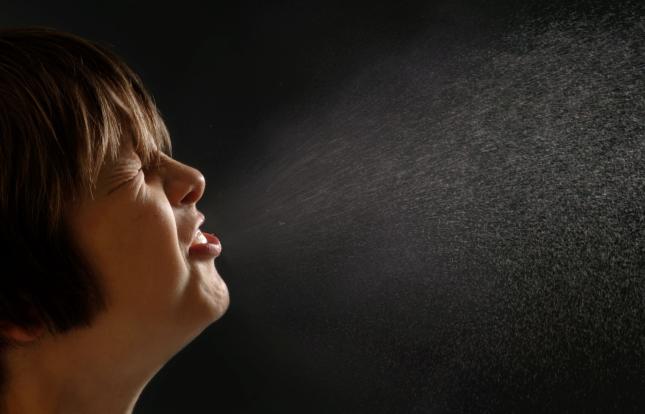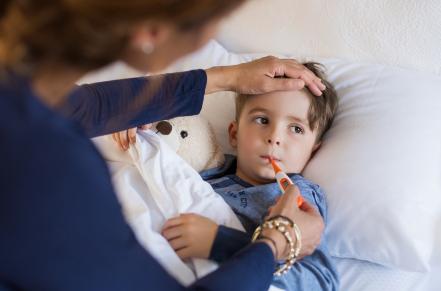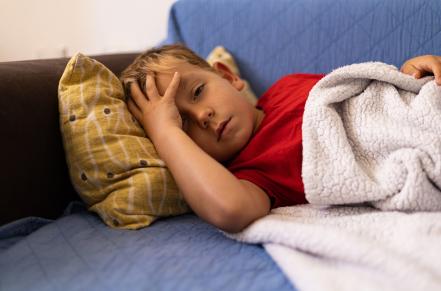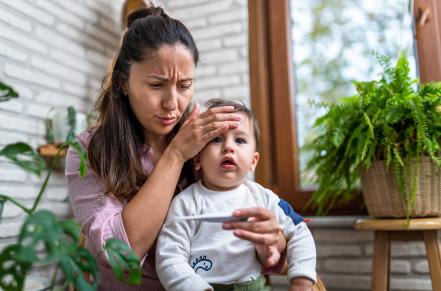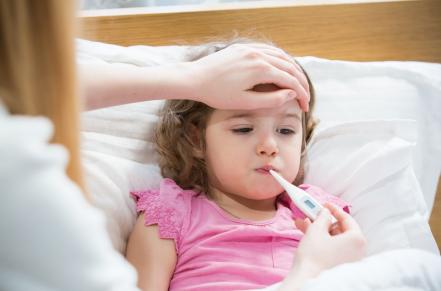What is the common cold?
The common cold is a mild viral infection, usually rhinovirus, of the upper respiratory tract (nose, throat, ears, and eyes).
Who gets the common cold and how?
Young children get colds very often, especially when they live with or play with other children. Young children may have a cold 6 to 8 times a year; infants can have up to 10-12 colds a year. Children can have a cold for 2 to 14 days, but not appear sick the whole time.
Young children get sick because there are many viruses that cause the common cold. Children may have immunity to one type of virus, but they can get infected with a different one and get another cold. Children build immunity to the viruses that cause colds as they get older.
The viruses that cause colds spread easily. The respiratory droplets carry the virus and spreads when people talk, sneeze, or cough. Contact with respiratory droplets on toys, eating utensils, tables, and other surfaces (doorknobs, faucets) can also spread the viruses.
What are the symptoms of the common cold?
Cold symptoms include:
- Stuffy or runny nose*
- Sore throat
- Coughing
- Sneezing
- Watery eyes
- Ear pain
- Headache
- Chills or fever
*Children can have a runny nose if they have allergies, flu, COVID-19, or RSV. There is no single cause of a runny nose. With a cold, the mucus from the nose is usually very thin and watery in the beginning when the virus is most contagious. Over time, the mucus can become thick, cloudy, yellow, or green, but this doesn’t mean the child is more ill or contagious.
Should a child with the common cold stay home?
A child does not usually need to stay home with a common cold. However, recommendations change over time, and there are other respiratory diseases that may require them to stay home, such as COVID-19, flu and RSV. Here is some additional guidance for parents.
Generally, children should also stay home if they don’t feel well enough to participate or if they have symptoms impacting caregivers’ ability to care for all children. Children should see a health professional if they have:
- Wheezing or difficulty breathing
- Behavior changes like inability to pay attention or not drinking anything
- Nasal congestion that lasts more than 10 to 14 days, which may mean a sinus infection
- Fever over 101 degrees Fahrenheit lasting more than three days
- Ear pain
- Red or crusty eyes
Tips to reduce the risk of the common cold
- Practice good handwashing.
- Wipe noses with clean tissues, dispose of them properly, and wash your hands.
- Show children how to cover their cough and sneeze.
- Avoid having children share food, bottles, or toothbrushes.
- Ventilate the indoor space by using an exhaust fan, open windows, and/or portable air cleaner; maintain and check the program’s HVAC system and use MERV 13+ filters.
- Use the Daily Health Check, exclusion policy, and staff health policy to guide health and safety decisions in your program.
- Follow the routine schedule for cleaning, sanitizing, and disinfecting in Caring for Our Children Appendix K
- Spend time outdoors, when possible. See recommendations about Active Outdoor Play for more information.
- Encourage vaccinations for COVID-19, flu, and other respiratory infections.
Where can I find more information?
California Department of Public Health (2023) Considerations when a Child has Symptoms of Illness in Child Care or School at https://www.cdph.ca.gov/Programs/CID/DCDC/Pages/Schools/SymptomGuidance.aspx#
Centers for Disease Control and Prevention (2023) Handwashing in communities: Clean hands save lives at https://www.cdc.gov/handwashing/
Centers for Disease Control and Prevention (2023) Rhinoviruses at https://www.cdc.gov/ncird/rhinoviruses-common-cold.html
Head Start Early Childhood Learning & Knowledge Center (2023) Preventing infectious diseases in early childhood at https://eclkc.ohs.acf.hhs.gov/physical-health/article/preventing-infectious-diseases-early-childhood-programs
Updated November 2023, UCSF California Childcare Health Program

